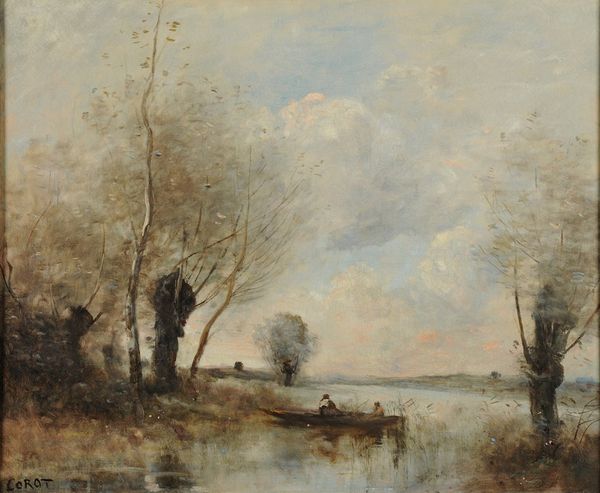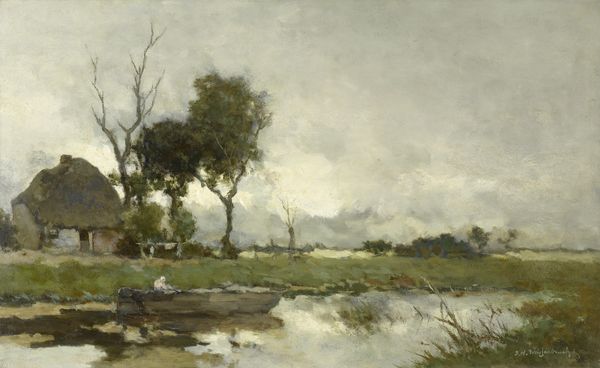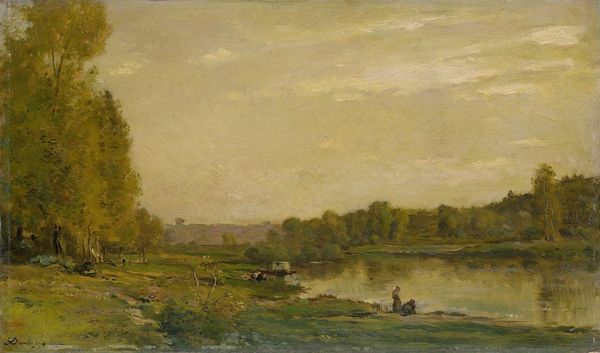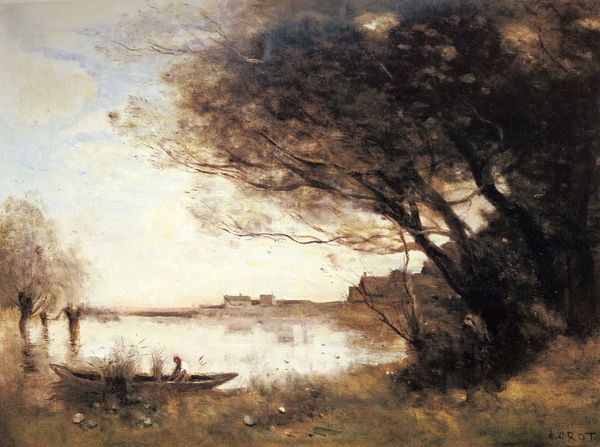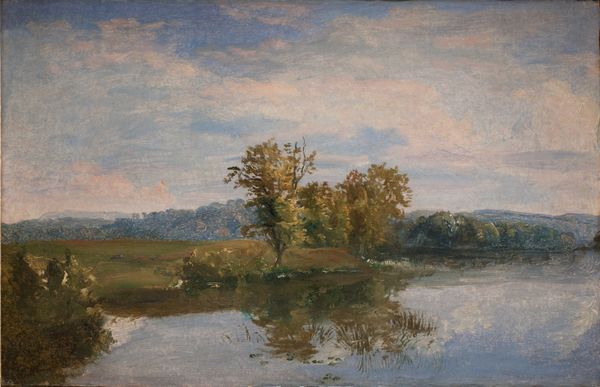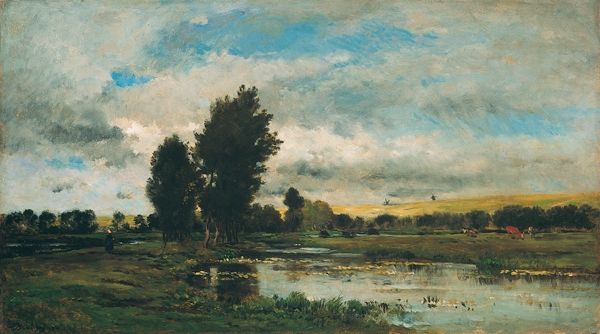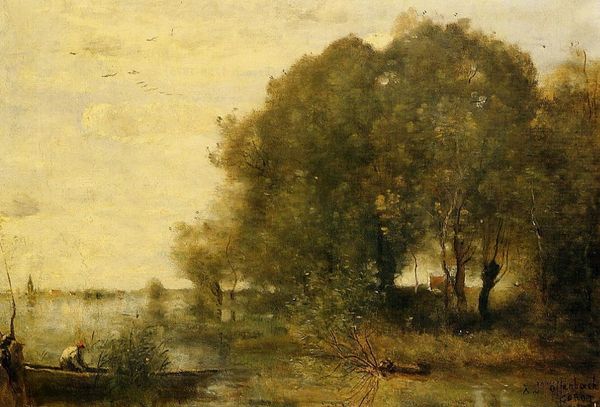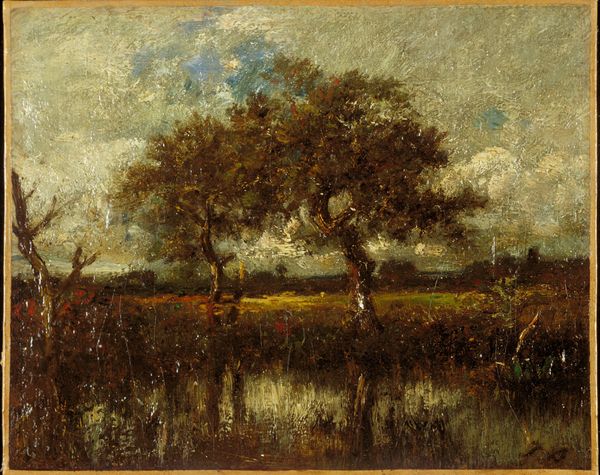
Dimensions: 21 1/2 x 26 in. (54.6 x 66 cm)
Copyright: Public Domain
Curator: Paul-Désiré Trouillebert, a French artist working around the late 19th century, painted this piece titled "A Pond near Nangis." It's an oil on canvas, showcasing a tranquil waterside scene. Editor: Mmm, feels…understated, doesn't it? The palette is muted, almost monochromatic, with all those soft greens and grays. Gives it this dreamy, hazy atmosphere like time slows down around it. Curator: I see what you mean about the colours. Consider the time period. It emerges from a landscape tradition steeped in Romanticism but looks forward to Impressionism with its "en plein air" approach—a move from the studio to directly capturing nature’s transient effects. Look at the way light dances on the water. Editor: And how still that water is! Like a mirror reflecting everything and nothing. Even that little boat looks almost stuck between two worlds. Is there someone in the boat? I can hardly see any definition around there. Curator: Good eye. The artist positions the figure and the boat at the water’s edge, a point of transition, perhaps alluding to deeper reflections about the self and the natural world. The pond, therefore, functions as more than just a body of water, becoming a psychological space. Editor: Right, right, like a symbol! Still, beyond that, it just sort of breathes quiet melancholy. Like someone remembering a summer long gone. Is there actually a town across the lake or is it just the mist of the water doing that to the skyline over there? It all just runs into itself with no sharp line separating any object from any other. Curator: I see the quiet too. And as you mentioned before, that skyline is an interesting, ambiguous one, as one sees so frequently during the height of Impressionism in French art. Editor: What do you take away from the art after everything has been said? Curator: I reflect upon that point of transition; the quiet that lingers as something fades. A contemplative bridge in pictorial form between inner thoughts and visible reality. Editor: For me, it's that even in what seems like simplicity, there’s an echo of deeper emotions—hidden in those quiet colours and still waters. Art doesn’t always need to shout to be heard, I suppose.
Comments
No comments
Be the first to comment and join the conversation on the ultimate creative platform.


